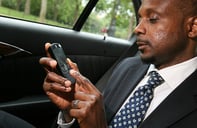Published on
Setting Expectations for Remote Learning

Institutions are beginning to break away from their traditional structure to respond to the COVID-19 crisis. How difficult is this shift? What kind of impressions are remote teaching and learning making on people new to online learning? Most importantly, how will the pandemic impact the future of learning? In this interview, Robin Robinson discusses the importance of differentiating remote learning from online education, how adopting to this new environment will change overtime, and the lessons she has learned from it.
The EvoLLLution (Evo): How has Framingham State responded to the COVID-19 outbreak?
Robin Robinson (RR): We were in a good position, at least from the perspective of the education technology office. We had already thought of how to get faculty to move to that online environment. It was more about going through with it than wondering how they would teach online. We were careful to talk about remote learning and not online or distance learning.
When we were asked to deliver training within a day or two, we could do so because of the advanced work we had done. Delivering lectures, meeting in real time, managing assessments—we created documents a week before all of this came down. From a teaching and learning perspective, things moved forward pretty well.
The optimism and collaboration across the university has been amazing. People are pulling together and making it happen. We’re in the best position possible. In the last two weeks, we’ve trained close to 200 faculty to use our tools and LMS resources. Different teams across the institution have been helping train other staff in whatever they can.
Evo: How important is it to clearly differentiate remote learning and online education?
RR: You need to set expectations. Normally, if someone is going to produce an online course, they’re going to spend at least a semester building out the appropriate course map and alignments to their course objectives. In this situation, with remote learning, you’re trying to meet the same objective as you would in a regular face-to-face class, but online learning is completely different. Your head space needs to reflect that, and you need to consider the things in this environment that can’t be done in a face-to-face environment. We’re drawing on what people understand as good teaching and trying to emulate that experience online as much as possible.
Remote delivery requires using a lot of the synchronous tools. Online learning is about combining the best of both worlds. We’re asking people to record lectures and deliver content in a certain way. At the same time, we’re not losing quality but focusing on the act of learning itself rather than the overall experience. Online learning lends itself to that, and it takes time.
Evo: How has your team’s role within the structure of the institution evolved to help create that university-wide remote learning environment?
RR: The infrastructure is in place, and the understanding of tools and resources are being supported. But at the same time, we’re constantly talking to faculty about how they teach and whether they’re using the LMS or other tools. When this crisis happened, we took each situation as it came. We planned out how we can solve it and leveraged that with what we were already doing.
From a technological perspective, we were well prepared to face the crisis. Our instructional designer is incredibly immersed in online learning, and he’s been offering some special classes and workshops on accelerated learning. Right now, we’re just trying to get through the end of the semester, but we need to continue to think about how we’re going to engage students in the online space.
Evo: How are people adapting to this new normal?
RR: What I’ve loved seeing at the university is the amount of collaboration and communication between everyone. We’re pulling together conversations with people that don’t normally interact. We’re looking at what’s happening on the advising side and how they’re going to use tools that are traditionally used in the learning space. People are trying to think out of the box.
Everyone is recognizing that we need to do the best we can for our students. Students are at the forefront of any conversation we have. Now we haven’t started delivering classes yet–-that happens on Monday–but everyone is as well prepared as they’re going to be because of the level of cooperation that we have on our campus.
Evo: Do you think the adoption of online learning is going to ramp up over time?
RR: I hope so. It’ll depend on the experience that students actually have. It’s interesting how what’s happening now with the Coronavirus has been influencing conversations around online learning for future programs. Faculty who were skeptical have now adopted online learning. Many of them are amazed at how well they can get to know their students and how well they can track their performances in school.
I’m hopeful that faculty will adopt different ways of reaching out and more openness to the idea that online learning isn’t evil. We’re a very traditional university, so it’s unlikely that we’ll radically change to significant portions of the faculty adopting online learning. But I think they will be more willing to integrate some of the techniques they have now learned.
What I’m concerned about is the digital divide. We want a very inclusive and diverse university, but that means recognizing that there are students at a disadvantage. I’m interested to see what’s going to happen to improve access for under-represented demographics in the online space.
Ultimately, I’m hopeful that there’ll be a more realistic understanding that online learning is possible and can have very positive results.
This interview was edited for length and clarity.
Editor’s note: This interview was recorded on March 27, 2020.
Author Perspective: Administrator



